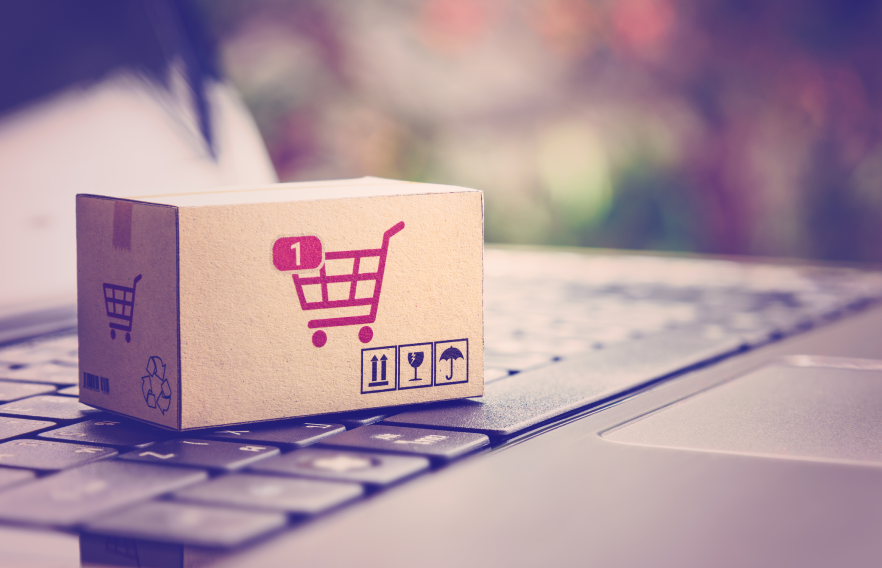The rise of instant delivery startups during the pandemic represents a huge data analytics opportunity.
As Mr. Rogers and Mr. McFeely from the old children’s TV show “Mr. Rogers’ Neighborhood” might have sung: if there’s anything you want, if there’s anything you need, there is an instant delivery service ready to bring it to you with speed. Since the start of the COVID-19 pandemic, investors have been pouring billions of dollars into the quick commerce market, where startups promise speedy delivery of groceries and popular household items within minutes.
According to an Oracle report, the arrival of COVID-19 led to an 18% increase in people across the world who had tried online grocery shopping, with almost three-quarters choosing delivery over pickup. The newest players in the Quick Commerce (Q-Commerce) market are looking to dominate last-mile delivery for consumers who enjoy the convenience and instant gratification of speedy delivery—an approach that provides access to valuable data insights about consumer preferences and behaviors.
Traditional retailers that fail to adapt run the risk of becoming mere warehouses for delivery services that are better positioned to win customer loyalty and collect data insights. At the same time, consumer packaged goods (CPG) brands that have launched their own direct-to-consumer (D2C) services may benefit from further exploring the Q-Commerce space to get closer to customers.
What is Q-Commerce?
Quick Commerce usually refers to services enabling customers to receive relatively small deliveries within an hour or less. But many of the new instant delivery startups consistently deliver in less than 30 minutes, and some even promise to deliver within 10 minutes. That allows such services to cater to the impulse purchases of customers who need their baby formula or toilet paper post haste.
Some of these instant delivery services pick up and deliver from local restaurants, grocery stores, and pharmacies. Others operate their own network of warehouses—sometimes called “dark stores” or micro fulfillment centers—where they temporarily store goods purchased directly from wholesalers or retailers.
Fulfilling such speedy delivery promises often requires having more delivery people and warehouses operating within shorter-radius delivery areas. Unfortunately, such constraints combined with low or nonexistent customer fees in the competitive q-commerce market mean that the growing array of instant delivery services typically operate at a loss. And it’s unclear how such q-commerce business models will eke out profits in the long run.
But that has not stopped instant delivery startups from raising hundreds of millions or even billions of dollars from investors during their rapid expansion in major markets worldwide in 2020 and 2021. Tech giants, large retailers, and CPG brands may also be looking to develop or acquire such services.
Data Insights from Q-Commerce
Whatever their immediate profits or lack thereof, instant delivery startups are sitting on growing piles of first-party customer data about what people want and when they want it. An instant delivery startup can know exactly when a customer living at a specific address chooses to add an item to his online shopping cart. This is because consumers have a specific need for something, which can be late-night munchies or new diapers for the baby at 2 am, and they need those items now.
Such first-party customer data from the Q-Commerce market can serve multiple purposes:
- Provide individual-level feedback on consumer browsing and purchasing preferences that can help customize in-app recommendations to engage current and prospective customers.
- Empower predictive analytics about the type, quantity, and timing of future customer purchases that can optimize inventory management, plan efficient delivery schedules, and inform workforce scaling decisions.
- Create CPG data insights about specific brands that can help the CPG industry to make future product changes or optimize marketing campaigns
- Enable data analytics to reveal trends in customer behavior and preferences that can prove useful for other third-party marketing and business decisions
By comparison, retail grocery stores or pharmacies may only know what mix of items a customer purchases in-person during a weekly shopping trip—and that’s if the customer is enrolled in a loyalty card program. CPG brands have traditionally relied on surveys and customer service interactions to gain first-party customer data insights, even if the pandemic has prompted some to launch new online services that sell directly to consumers.
The Future of Q-Commerce
The rise of Q-Commerce represents one of the next big steps in e-commerce that has accompanied a consumer shift toward online grocery shopping during the pandemic. In the midst of such changes, instant delivery services may be among those best positioned to capture some of the influx of first-time online shoppers looking for speedy delivery.
Within the United States alone, Business Insider Intelligence is projecting that 55% or more of consumers will have tried shopping for groceries online by the end of 2024. At the same time, Nielsen data shows that U.S. sales of online consumer packaged goods soared by $63 billion—primarily driven by food and beverages—between 2019 and 2020.
Such online shopping habits may prove sticky long after the COVID-19 threat has subsided – 70% of consumers surveyed by Oracle anticipate getting their groceries online as much or more frequently than they have during the pandemic.
By tapping into big data from the Q-Commerce market, organizations can gain powerful data insights from customers at the exact moment when people are deciding to purchase a fresh assortment of snacks or restock some household essentials. But to make the most of this opportunity, instant delivery startups and their partners will need to cultivate or seek out data science teams that know how to make the most of data analytics software and tools such as Machine Learning.
Partner with Us
At LatentView Analytics, our data science experts seize the opportunity to make sense of big data and turn them into insights for our clients to make data-driven business decisions. Get in touch with us at marketing@latentview.com to know more.



